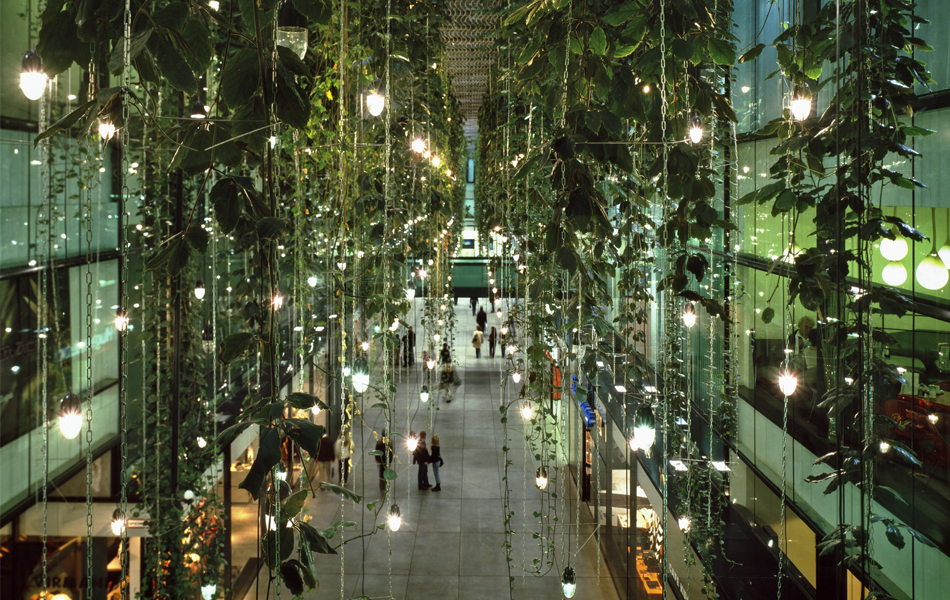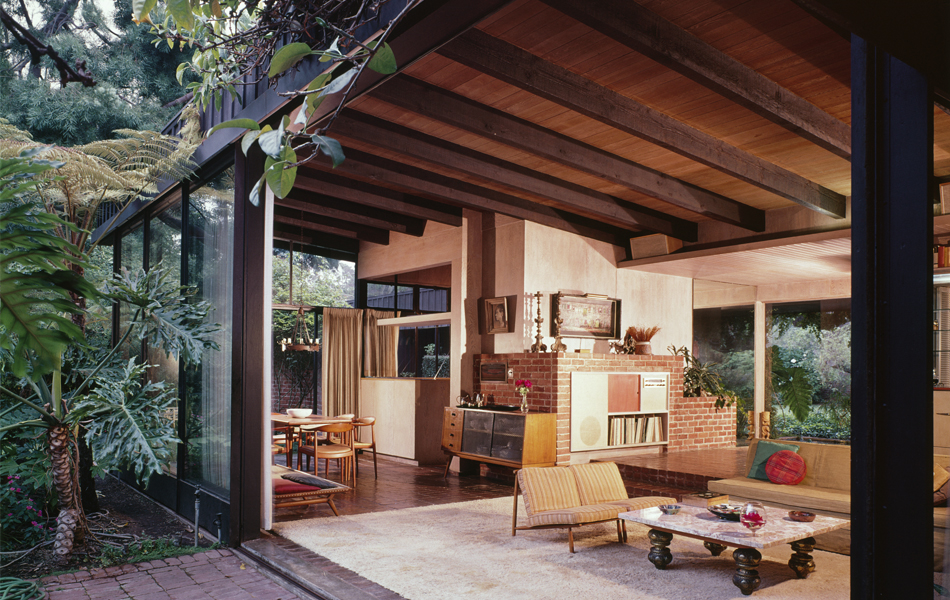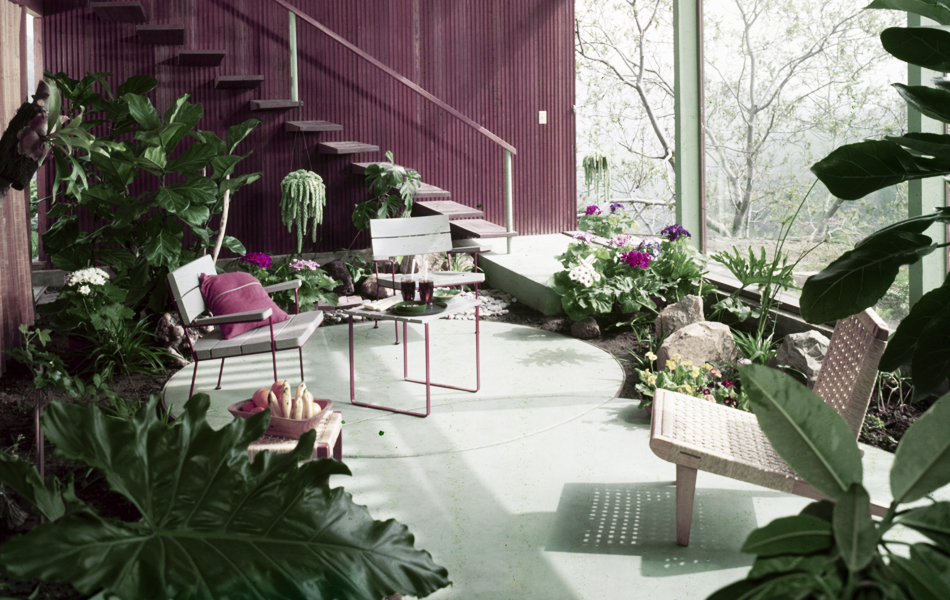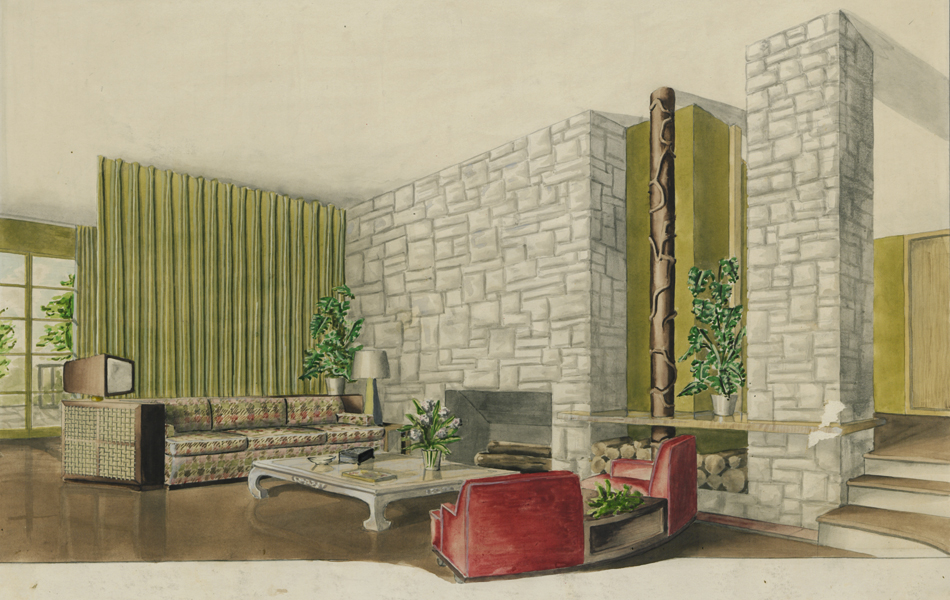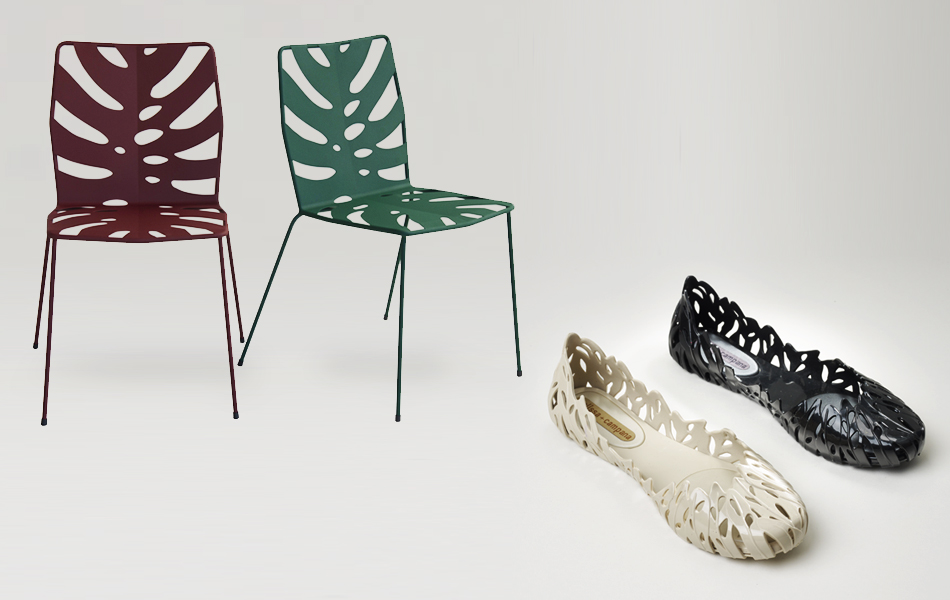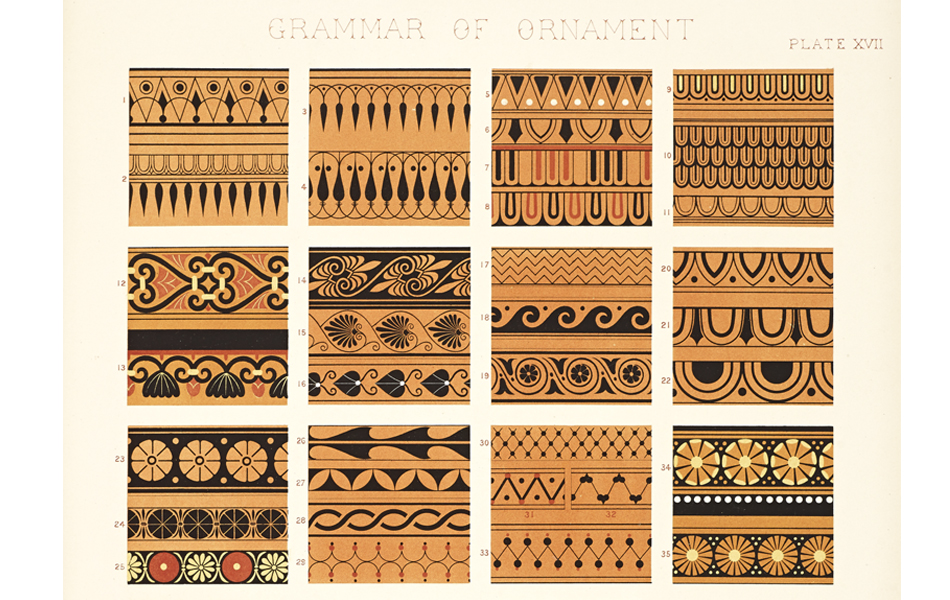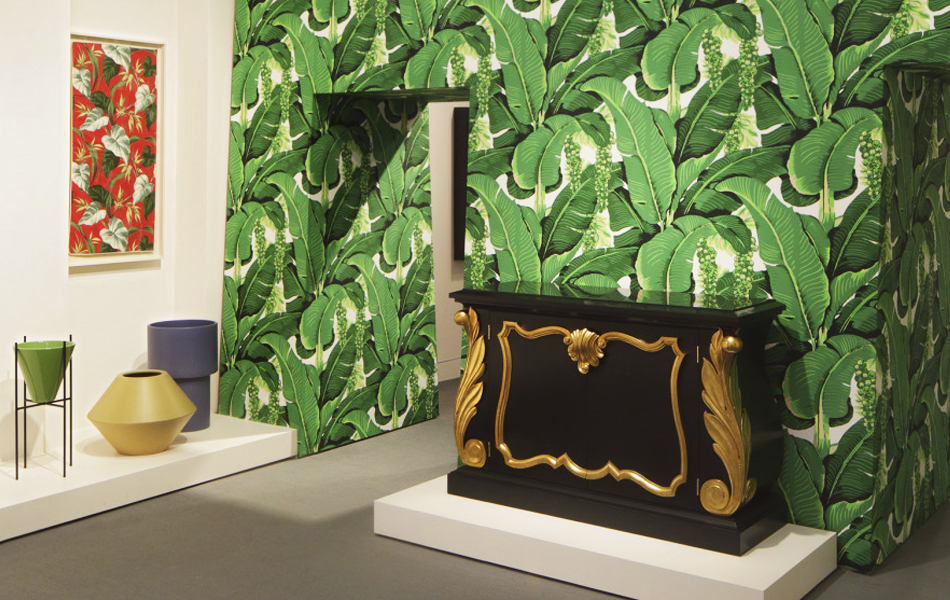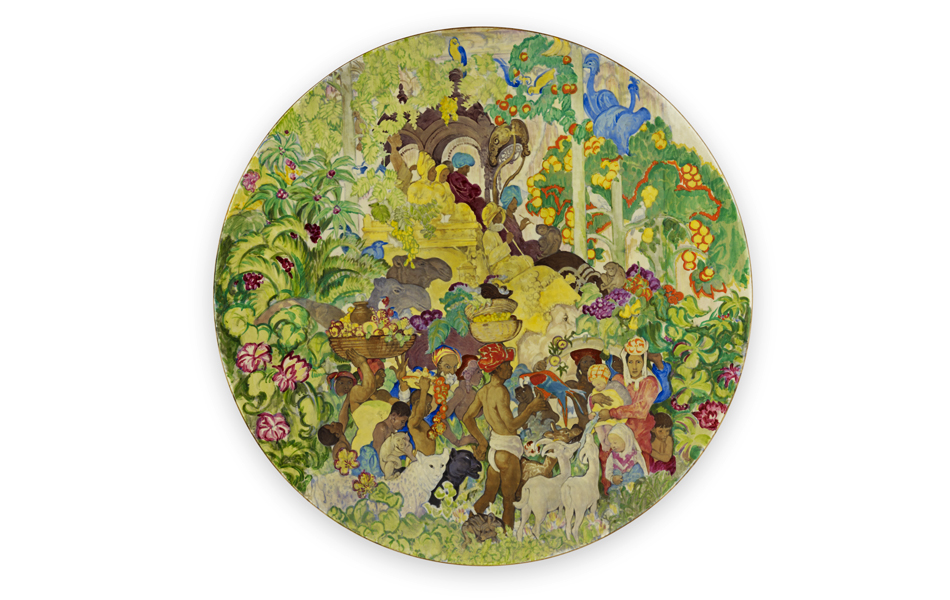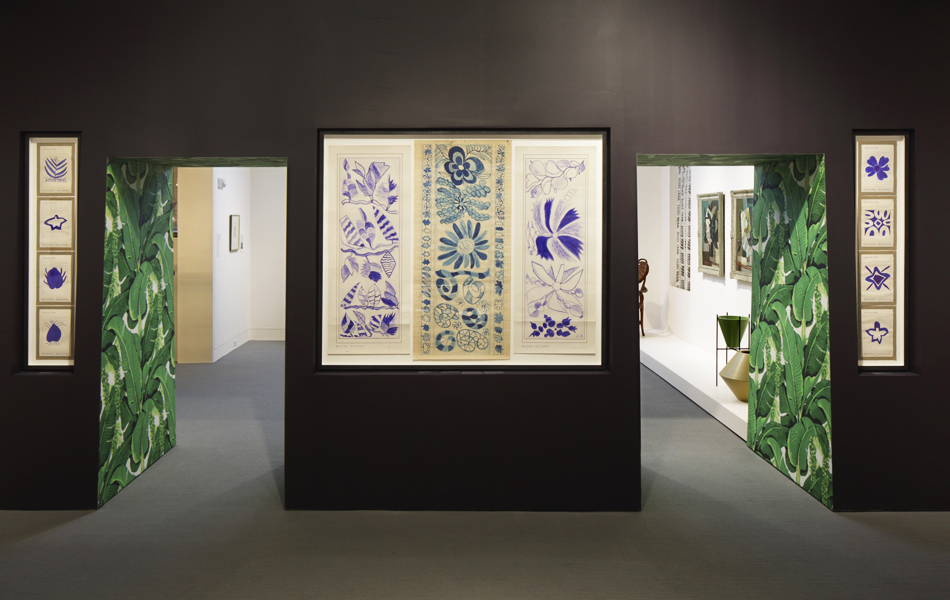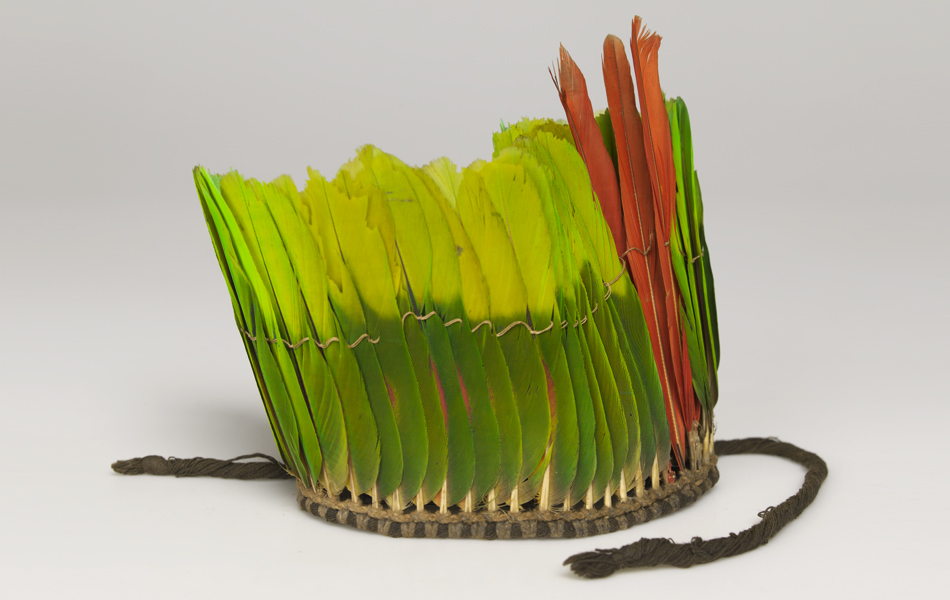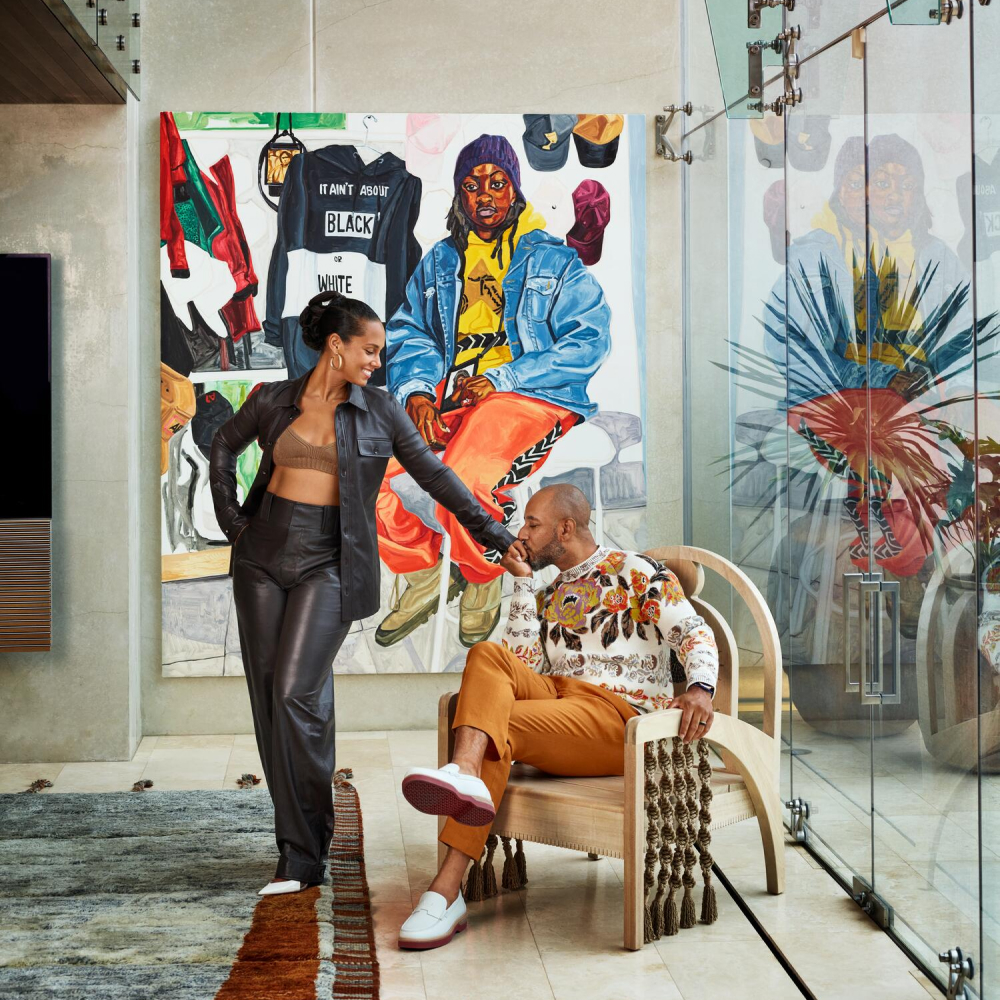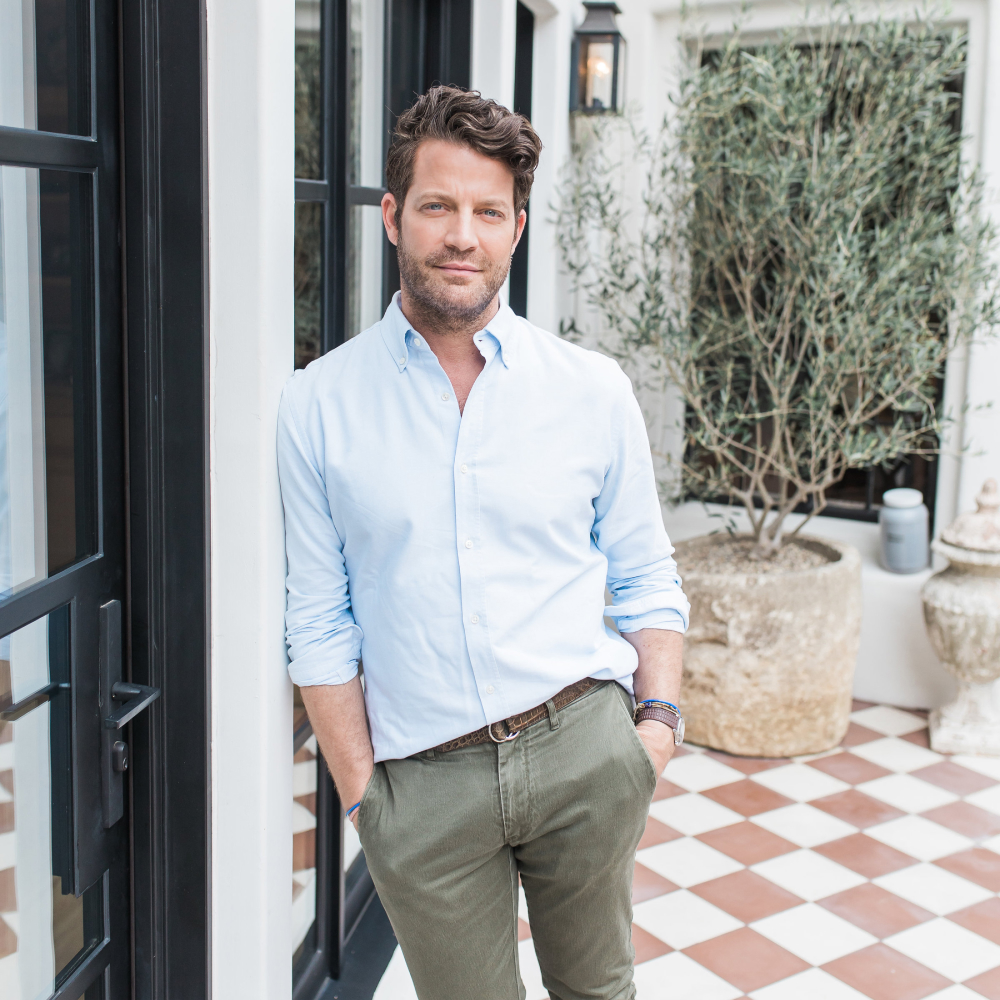
Henri Matisse’s 1935 print Interior with Leaves depicts a philodendron that he grew in his studio. He felt the plant helped him better understand line, form and weight in compositions. (© 2015 Succession H. Matisse / Artists Rights Society, courtesy of Marlborough Gallery). Top: On a gallery wall of the exhibition is White Petal Forest Diamond (Philodendron), a 2015 digital wallpaper by Carl Pascuzzi and Phoebe St. Germain Fellowes for EDGE Collections. Courtesy of Wolfsonian-FIU
The philodendron plant may be a common sight, long a stalwart of living rooms and office waiting rooms, but it has also long held an exotic allure for artists and designers. And, as depicted in a new exhibition at the Wolfsonian museum in Miami Beach, its path from jungle to windowsill is a surprising and storied one. “It is pretty strange for the museum to take a humble houseplant and explore its origins in Central and South America and then follow its trajectory to the European and American house and garden,” admits the Wolfsonian’s Christian Larsen, who curated “Philodendron: From Pan-Latin Exotic to American Modern” (on view through February 28).
What exactly is the philodendron? To start with, it is a plant genus with hundreds of different species, mostly vinelike and often clinging to the trunks or branches of trees. Says Larsen, “They are especially noted for their foliage, which morphs and transforms as the leaf matures, making it difficult to identify species. Even between species, the genus is appreciated for the great diversity of color and form of the usually very large, often heart-shaped leaves.”
It was in the 19th century that Heinrich Wilhelm Schott — who by himself identified 587 species of philodendron when on expedition in Brazil— installed his tropical discoveries in the Imperial Gardens of Vienna, thus securing a place for the plant in future history. After that the philodendron quickly moved from a subject of scientific inquiry to an object of desire. Larsen believes that its hold on us has a number of causes, “but the primary one is the beauty of the leaves. They present bold silhouettes, cast wonderful shadows and range in color from brilliant greens to deep purples and reds.”

A cotton and silk dress by Erdem from the Spring/Summer 2015 collection was inspired by botanical drawings, Victorian conservatory architecture and the 1951 film The African Queen. Courtesy of Erdem.
The curator points out that architects and designers in the middle of the 20th century found the philodendron particularly well suited to modern spaces; the exhibition features photographs of rooms by such geographically and aesthetically divergent designers as Morris Lapidus, William Pahlman, Igor Polevitzky, A. Quincy Jones, Richard Neutra and Charles Eames, among many others, most of them shown in photography by Julius Shulman, whose eye was clearly drawn to the philodendron.
Larsen, who is moving on to a new post as associate curator of modern decorative arts and design at New York’s Metropolitan Museum of Art at the end of this year, began to focus on the philodendron while he was working on his Ph.D. dissertation on transnational Brazilian design at the Bard Graduate Center in Manhattan. But it was only after he moved to Miami that the concept behind the show began to evolve. “Coming here, the two things that impressed me were the wide-open sky with its cloud formations and the lush vegetation,” he says. From there, it was easy to channel the ideas he’d already been researching into the framework of an exhibition.
The exhibition opens with early, and quite beautiful, botanical studies (the oldest book plate is from 1693, with most dating to the 19th and early 20th centuries) and then moves quickly to fine and decorative arts that show the philodendron in many and varied iterations, perhaps most famously in the work of Henri Matisse, who spent a decade working with the shape and form and image of the plant in paintings, drawings and cut-outs. (The artist is represented here by a single small 1935 print, Interior with Leaves.) Also on view are what might be considered folk art or anthropological objects, including a circa 1950 sequined voodoo flag (signed J.B.J.D.) from Haiti t and clay figurines and a feather-and-cord headband made in the middle of the 20th century by the Karajá people in Brazil.

The renowned Brazilian landscape architect Roberto Burle Marx adored philodendrons, making them the subject of two abstract paintings never exhibited in the U..S before this exhibition. Still Life with Philodendron II, 1943, oil-on-canvas, is one of them. Courtesy of Paula and Jones Bergamin Collection
The landscape architect and artist Roberto Burle Marx is not just synonymous with the contemporary Brazilian landscape but also inextricably linked to the philodendron, so much so that one species is named after him. The eponymous plant can be seen in Mauricio del Valle and Veronika Schunk’s site-specific installation, featuring giant topiarylike columns, in the museum’s lobby.
In 1944 another icon of the 20th century, the interior decorator Dorothy Draper, created the interiors for the Palácio Quitandinha in Petrópolis, Brazil, developing an ornamental language that embraced the natural flora so abundant there, including the philodendron. This became the basis for a line of furniture, textiles and, perhaps most famously, a wallpaper that she named Brazilliance and sold in the United States and Canada, as well as in Bermuda, Mexico, Cuba, Brazil and Hawaii (not then a state).
The exhibition does not stop at mid-century. In the late 1990s, the artist Michele Oka Doner was photographed by Karl Lagerfeld in an ensemble of philodendron and palm leaves, both of which have figured importantly in the Miami-born artist’s work, including a bronze sculpture finished this year and also part of the exhibition. Among the recent pieces on view are a pair of Costela de Adao (or Adam’s Rib) shoes created by Humberto and Fernando Campana for Melissa in 2011 and the Deliciosa chair designed by Fernando Jaeger last year. (It should be noted that the deliciosa is not strictly a member of the philodendron family but for aesthetic purposes has long been a happily adopted child.)

In the Wolfsonian’s lobby, the Colombian-German landscape architecture team Mauricio del Valle and Veronika Schunk have created Forest for the Trees, a pop-up installation of various philodendron specimens arranged as topiary-like columns, including one named for Roberto Burle Marx.
To demonstrate just how far we’ve come from the days when botanists first sketched in the rainforest, the show closes with a strikingly beautiful large-scale photovoltaic solar panel titled GROW 1 Solar System. Created by Samuel Cabot Cochran and Benjamin Wheeler Howes — born, respectively, in 1982 and 1983 — of New York’s Sustainably Minded Interactive Technology, it features cutting-edge power-generating technology that’s embedded in philodendron-like “leaves.” All of which tells us that even as the boundaries of design blur more and more these days, after two centuries the philodendron is still part of it all.

